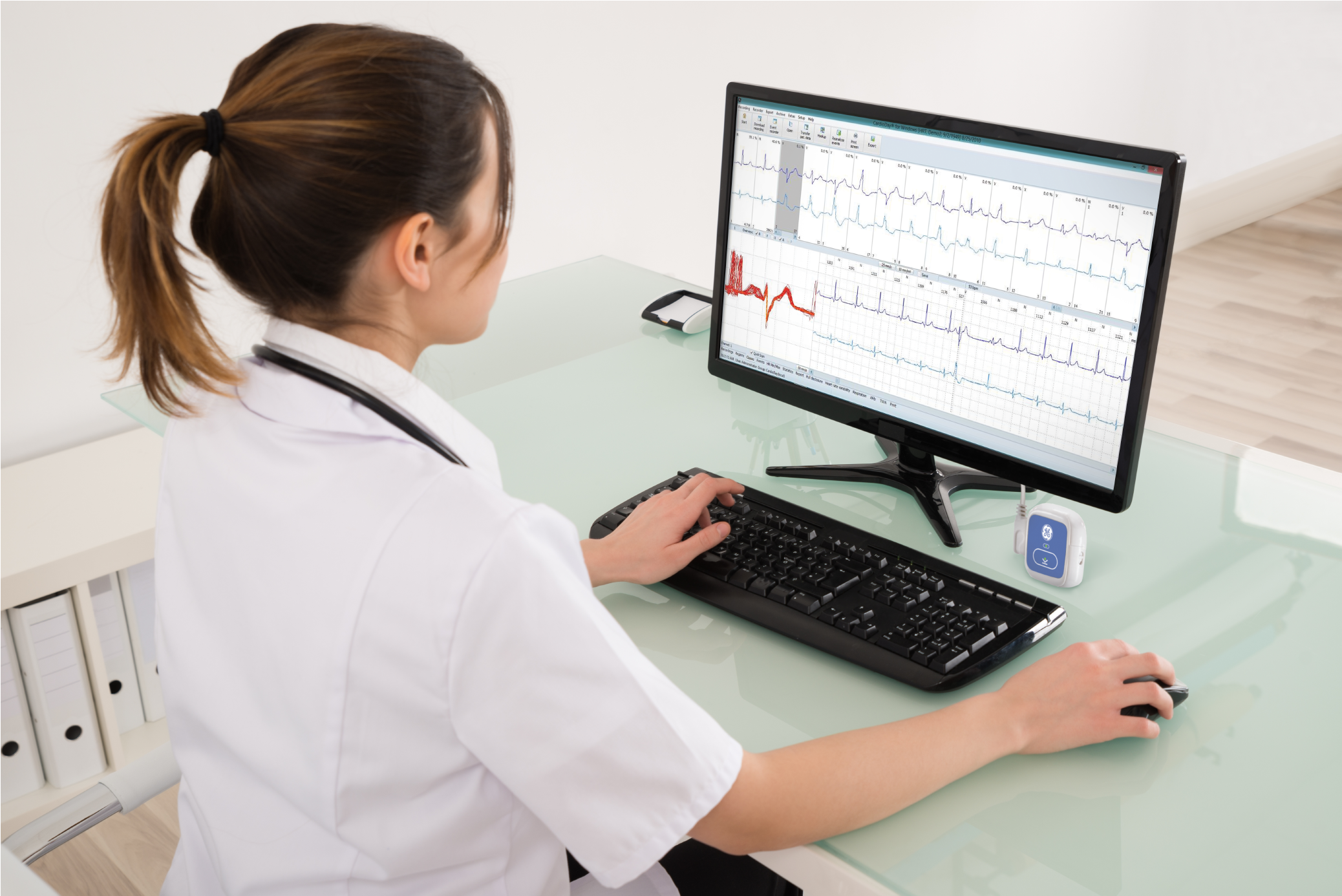Simplifying the assessment of QT measurements using CardioDay® Holter ECG
Identifying cardiac abnormalities using QT intervals is vital to diagnose long QT syndrome, a genetic or drug-acquired heart rhythm disorder that affects up to 1 in 2000 people1.
If left untreated, it can cause life threatening arrhythmias including sudden death.
The use of standard electrocardiogram (ECG) to examine heart rhythm and electrical activity captures only 10 seconds to a few minutes of heart function. The use of Holter ECG delivers a deeper level of information from the patient over a longer length of time such as 24 or 48 hours and in some cases longer. This builds up a more detailed and accurate picture of the heart to support the clinician with decision making and diagnosis.
Empowering clinical confidence & trust
Professor Dieter Nuyens, Cardiologist and Electrophysio-logist at Hospital Oost-Limburg (ZOL) Genk in Belgium has been using GE HealthCare’s CardioDay ECG Holter solution’s QT module to monitor and investigate suspected cases of Long QT Syndrome.
Current studies at Hospital Oost-Limburg using the QT module include
• Patients presenting with QT query symptoms;
• Familial screening of long QT patients whilst waiting for gene test results;
• For drug safety screening when people have been prescribed certain anti-depression, anti-epilepsy and oncological medications that can give rise to QT prolongation.
Creating certainty when diagnosing Long QT Syndrome
"In long QT syndrome, we know that 30% of the time patients have regular QT intervals so current guidelines advise to take sequential ECGs to make a diagnosis. You cannot exclude the presence of Long QT on regular 12-lead ECG as the QT intervals are too variable. Therefore, the use of Holter ECG takes out the variability as you have a lot of data over 24 hours. It is not only more sensitive, but it is also much more specific,” Professor Nuyens states.
“When using Holter ECG you need to look at the QTi (individualized QT correction) measurement and you don’t need a correction formula as you would with QTc. This takes the guesswork out of patient assessment and boosts trust. There are many different correction formulas to use QTc, but they are always an estimation of the rate adaptation of your patient, and we have to ‘guess’ what the QT interval should be at 60 beats per minute (BPM). It is always wrong; you just cannot trust it. When using QTi on the CardioDay Holter, you don’t use formula at all, you look at the interpolation line and can see the exact QT at 60 BPM.
You also get the slope of the interpolation line, which is a good physiological measurement of the rate adaptation of the patient. When the slope is too high, for example, it is indicative of an underlying disease and a high arrhythmic risk. QTi is a far superior measurement,” he continues.
Helping with ongoing evaluation of Long QT patients
Beyond an initial long QT syndrome diagnosis, the use of CardioDay Holter ECG is also useful for evaluating ongoing patient therapies.
Professor Nuyens explains, “We know that once medicated with beta blockers the risk of sudden cardiac death for long QT patients drops dramatically. However, it’s not foolproof, people can still die. But if you can see a drop in QT levels on the Holter evaluation to almost normal levels, it gives confidence that the therapy is working. If you see that QT is still severely prolonged, it helps you to consider additive therapies for those patients.”
CardioDay Holter ECG is designed for the complexity and pace of today’s healthcare environment to support clinical decision making. It helps manage high volumes of data at speed, whilst maintaining a high quality of care. Data is presented graphically with visual clarity that enables quick, intuitive operation. Algorithms include QT measurement; Heart Rate Variability (HRV); ST segment measurement; Heart Rate Turbulence (HRT); and T-Wave Alternans (TWA).
Diagnosing Long QT Syndrome: Patient case example
Upon waking in the night hearing her baby crying, a female adult stood up quickly but dropped down on the floor with shaking movements.
She was admitted to the Neurology Department with suspected epilepsy for investigation. Here she underwent a regular ECG where it was noticed that her QT was prolonged.
A Holter ECG analysed with CardioDay was performed, and results illustrated that the QTi was severely prolonged indicating long QT syndrome. Genetic results were also requested, and these have since confirmed long QT syndrome. The patient is now treated with beta blocker agents and is under follow-up.
“CardioDay helps you gain greater trust in patient symptoms. You see many false positive QT prolongations on regular ECGs, but as a physician you cannot take care of every one of these otherwise you are overshooting. The CardioDay Holter ECG is more specific and helps you see significant QTi prolongation and abnormal rate adaptation to base supplementary arguments that something is going on that needs thorough investigation. It makes our life much easier.” Professor Dieter Nuyens, Cardiologist and Electrophysiologist at Hospital Oost-Limburg (ZOL) Genk.
1 British Heart Foundation, https://www.bhf.org.uk/informationsupport/conditions/long-qt-syndrome#:~:text=Long%20QT%20syndrome%20(LQTS)%20is,by%20other%20things%20like%20medications & Schwartz, P. J., Stramba-Badiale, M., Crotti, L., Pedrazzini, M., Besana, A., Bosi, G. et al. Prevalence of the congenital long-QT syndrome. Circulation 120, 1761–1767 (2009), https://www.ahajournals.org/doi/10.1161/CIRCULATIONAHA.109.863209







